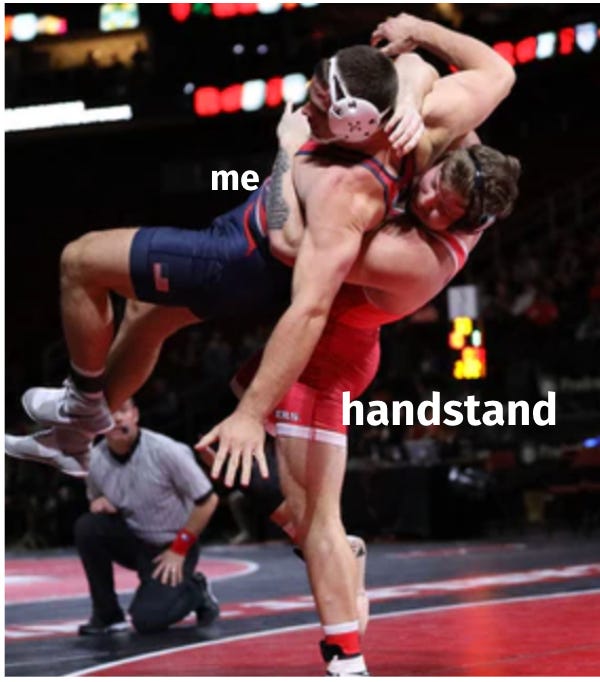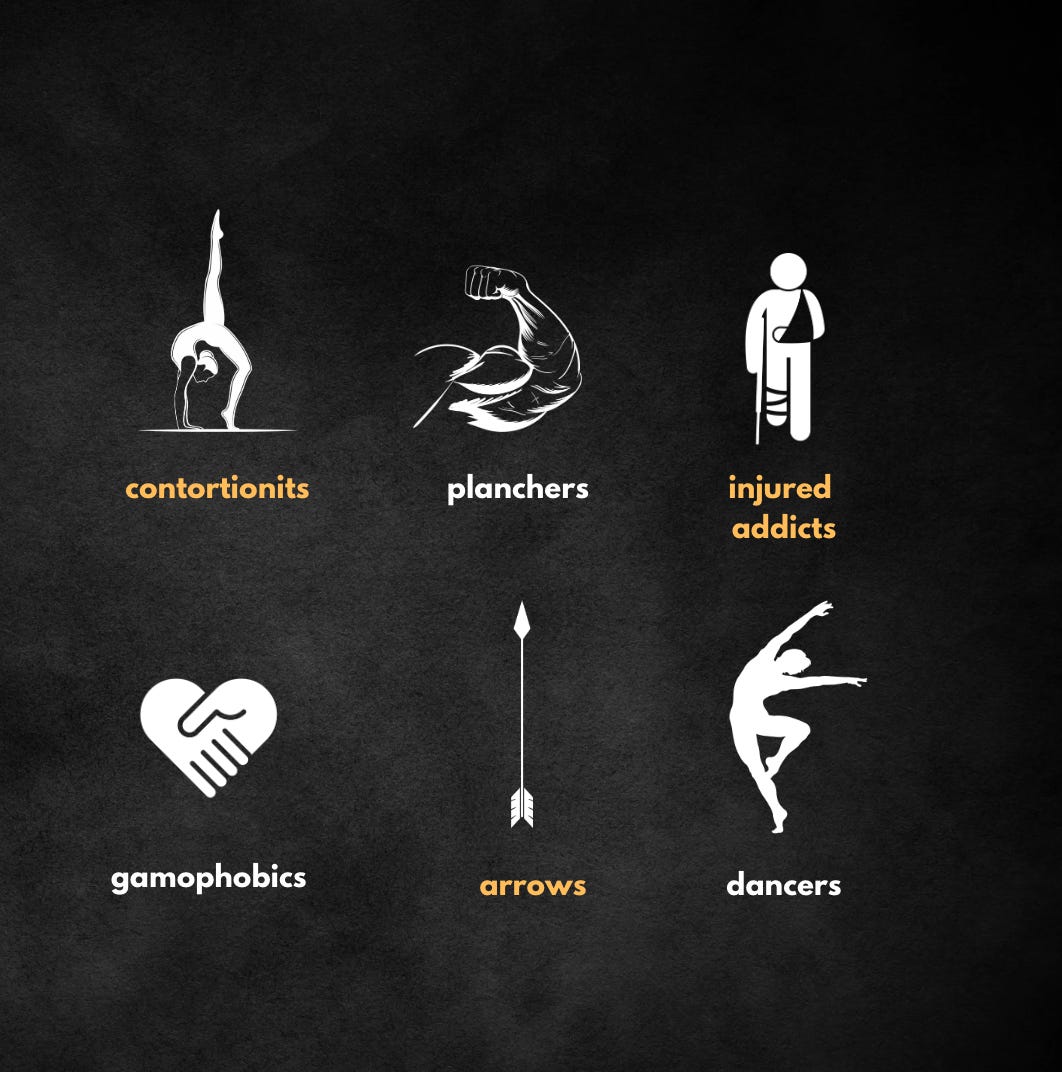The 1st stack - how the shoulders actually need to be aligned over the hands properly - is probably THE drum I have been beating the loudest for the last decade. 🥁
It was one of the first realisations I had, when grappling with the handstand - no one seemed to bother about it.
Not one teacher was emphasising, Youtube was all over pointed toes and engaged cores, yet the more I explored it the more I realised the following:
In the vast majority of undershot handstands, the culprit is the shoulder position
I abhor the absence of logical thinking in teaching methods. Yet they’re riddled with flawed syllogisms, which is a fancy way to say that most of the advice out there sounds like the following:
I wanted to learn to handstand.
I pointed my toes.
Therefore pointing your toes will help you learn to handstand.
¯\_(ツ)_/¯.
So I tested…
Can I kick-up and hold a handstand with the shoulders aligned before vertical: No.
Can I kick-up and hold a handstand with the shoulders aligned past vertical: Yes.
Can I balance without the shoulders aligned: No
Do I lose balance once the shoulders misalign: Yes.
Is this replicable in students and peers: Yes.
Is there a counter example to this: Yes and No. The only counter example is a different family of handstand altogether, with its own set of rules, the hollowback.
Enters… the First Stack
Four profiles
The proper, functional (read: without which nothing else matters) alignment of the shoulders over the hands was soon labelled the First Stack.
99% of students tend to align their shoulders over their wrists, and most of them miss the target completely and leave their shoulders before the wrist line. At that level, this always results in a loss of balance.
This, I believed, was linked to the following idea in my students’ head that said:
a handstand should be straight, therefore my forearms should be perpendicular to the floor.
I won’t blame the reasoning, but the trained eyes will see things in more details. Let’s take one of the straightest lines in the game, Yuval’s:
Straight like an arrow, yet if you draw a line from the centre of the shoulders down to the floor, you’ll see that the shoulders aren’t over the wrists, they’re over the 1st knuckles. If you look a the wrist angle, you’ll see that it’s not 90 degrees, it’s less.
And surely: the more aware my students became of this tendency to stop their shoulders just 1 cm short of where they should be, the longer and more consistent their hold begun to be.
And that’s how the 1st stack became one of the alignment cornerstones of the Handstand Academy method.
The next ten years of work with in-person students in Dublin and online astronauts will nonetheless prove that this was just the beginning of it.
First Stacks 2.0
A few scenarios, student profiles and situations indeed called for more precision. Let’s list them here. You may recognise yourself in one. If so, read carefully what follows.
#1) Planchers & wrist contorsionists.
In handstand, when you go a bit too far forward with your shoulders, you enter the realm of planching. You planche when your shoulder position allows you to use upper body strength to compensate for an alignment that otherwise would not be held. We have called this kind of alignment - dysfunctional.
Some planche by default because they’re strong. It’d be rude to not do it, since it tremendously help their balance, so in my book we embrace it first and we then proceed to teach their bodies how to rely less on brute force and more of subtle positioning.
Keep reading with a 7-day free trial
Subscribe to Handstand Academy to keep reading this post and get 7 days of free access to the full post archives.





